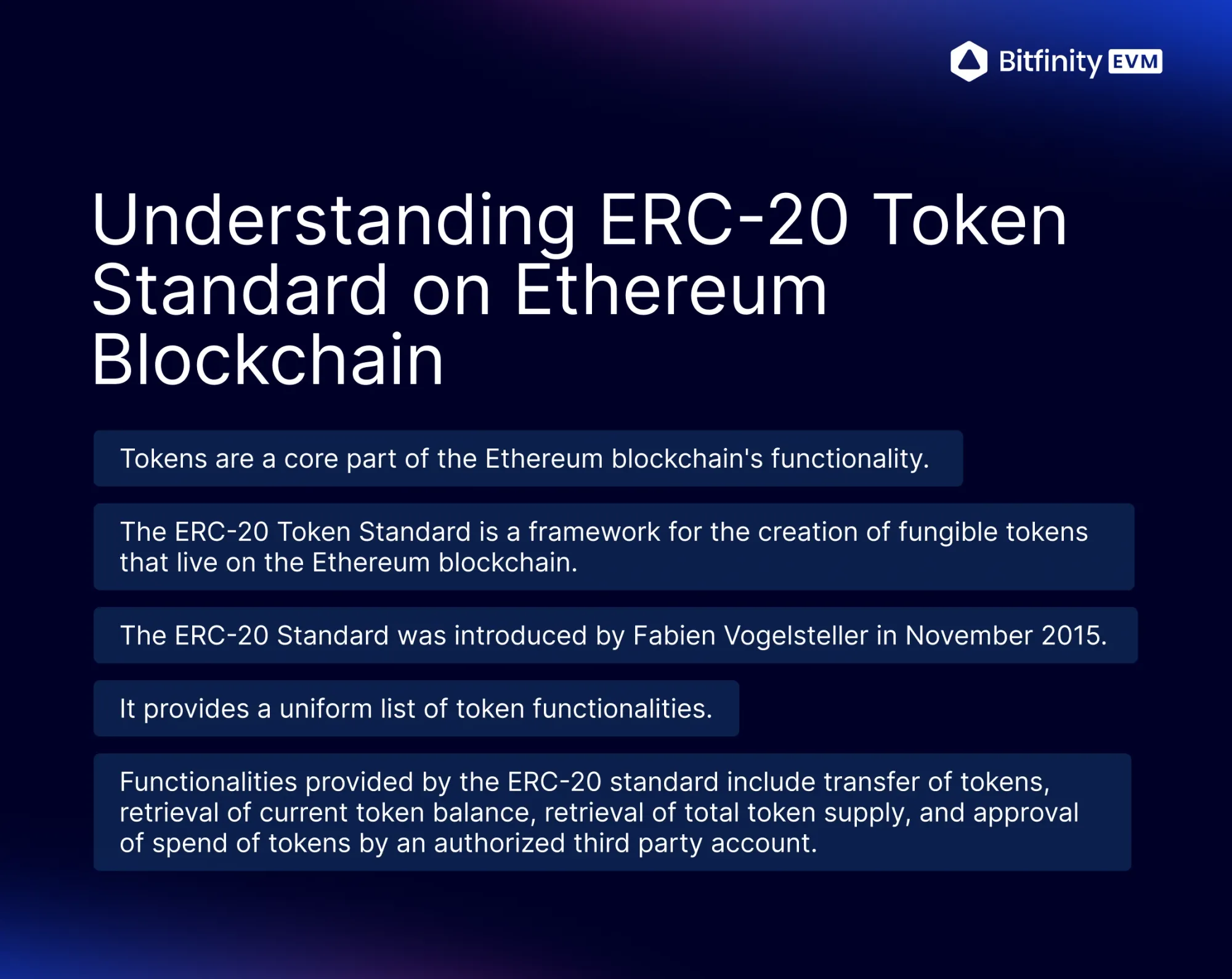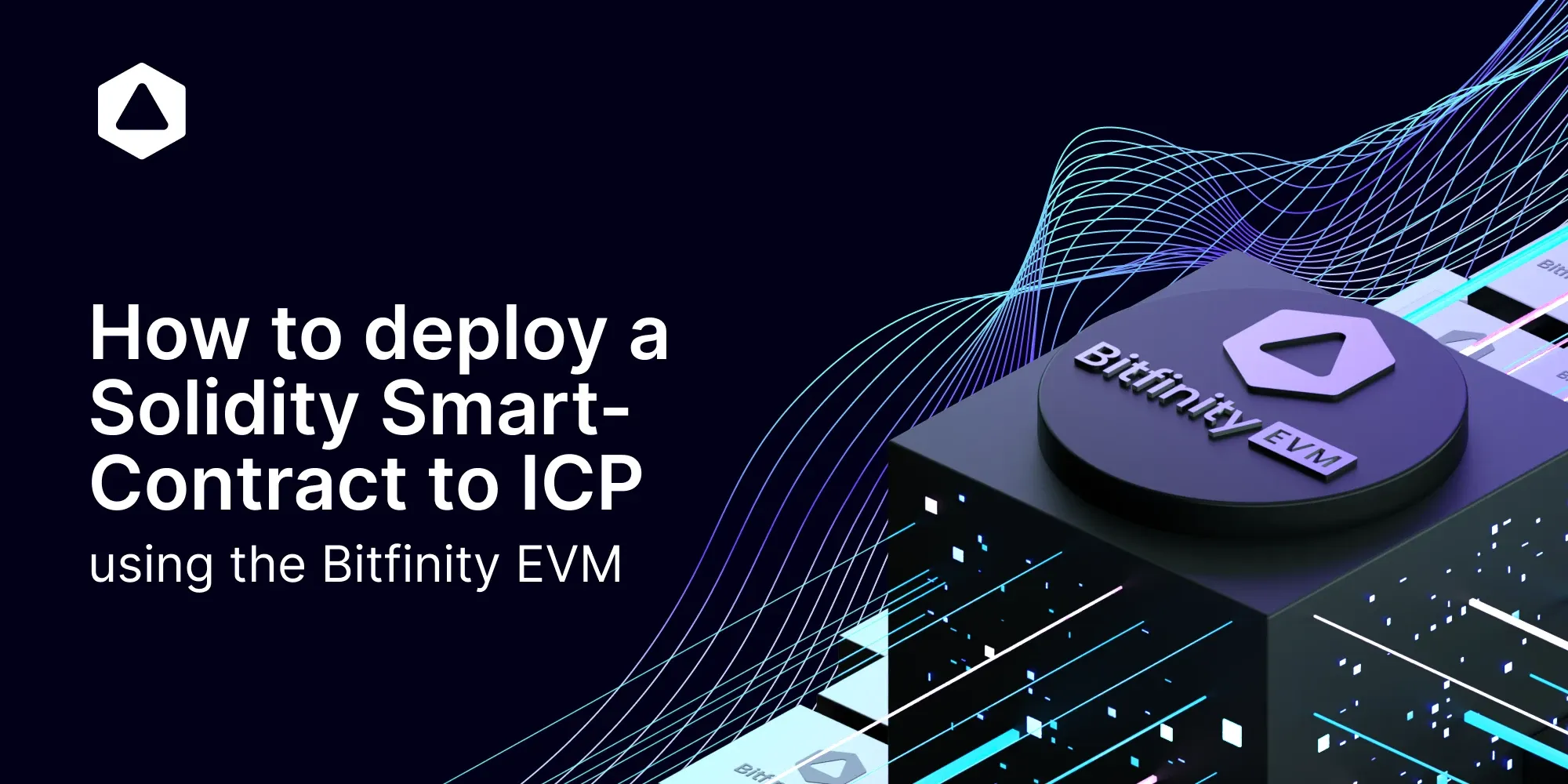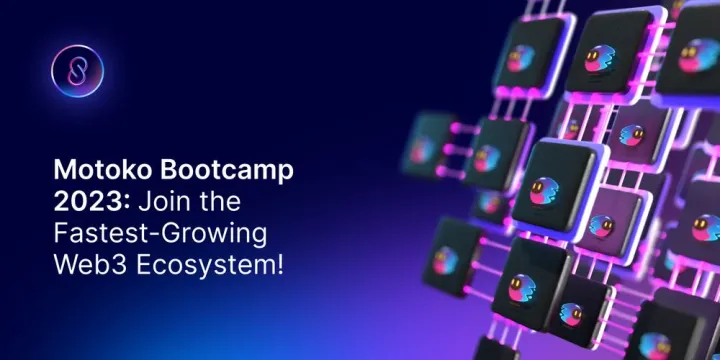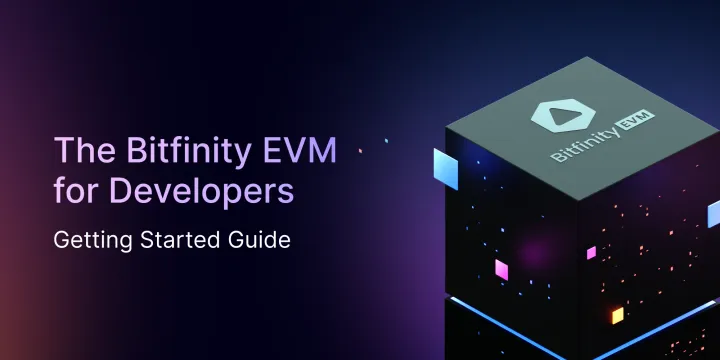An introduction to ERC-20 on Bitfinity

Tokens are a core part of the Ethereum blockchain's functionality. They can be used for just about anything, from representing a piece of art (Non-Fungible Tokens), to representing an underlying asset like gold as a Synthetic Token.
The ERC-20 Token Standard is a framework for the creation of fungible tokens that live on the Ethereum blockchain. Such tokens are fully compatible with Ethereum and the EVM, and are easily interacted with using Ethereum based tools such as Metamask.
They provide much of the functionality that we have come to expect from Ethereum, and are the reason that there is such a wide variety of Ethereum based tokens available today on the crypto market.

The ERC-20 Standard
The ERC-20 token standard was introduced by Fabien Vogelsteller in November 2015. The standard introduced an API for tokens within smart contracts, making it simpler and more efficient to implement new tokens on the Ethereum chain.
Tokens can represent virtually anything:
- skills of a character in a game
- lottery tickets
- reputation points in an chat platforms
- financial assets like a share in a company
- an ounce of gold
- governance votes
- and more...
The beauty of the ERC-20 standard is that it provides for a uniform list of token functionalities. This makes things easier for developers, in that they needn't reinvent the wheel every time they wish to release a token.
Functionalities provided by the ERC-20 standard include;
- Transfer of tokens from one account to another.
- Retrieval of the current token balance of an account.
- Retrieval of the total token supply on the network.
- Approval of spend of tokens from a given account by an authorized third party account.
Methods and Events
Through the implementation of the ERC-20 standard, a set number of methods and events can be can be called from the contract.
Methods
function name() public view returns (string)
function symbol() public view returns (string)
function decimals() public view returns (uint8)
function totalSupply() public view returns (uint256)
function balanceOf(address _owner) public view returns (uint256 balance)
function transfer(address _to, uint256 _value) public returns (bool success)
function transferFrom(address _from, address _to, uint256 _value) public returns (bool success)
function approve(address _spender, uint256 _value) public returns (bool success)
function allowance(address _owner, address _spender) public view returns (uint256 remaining)
Events
event Transfer(address indexed _from, address indexed _to, uint256 _value)
event Approval(address indexed _owner, address indexed _spender, uint256 _value)
By implementing this set list of methods and events, token deployment becomes more predicable and easier to manage. This is extremely important in the context of crypto, where mistakes and omissions are completely unacceptable for security reasons.
More details on Methods and Events associated with ERC-20 can be found on the EIP-20 page.
Creating and Deploying an ERC-20 Token to the Bitfinity EVM
The existence of the ERC-20 token standard makes it quite straightforward to develop and deploy your own token on the blockchain.
There are many different examples of "How To" guides available online, showing various different methods of deploying a token quickly and easily.
By making it easier to deploy tokens to the blockchain, the ERC-20 token standard encourages development of crypto assets, and the growth of the Ethereum ecosystem as a whole.
While many activities on the blockchain require a high level of developer knowledge, deploying an ERC-2o token to the blockchain is widely accessible to all, thanks to the existence of the ERC-20 token standard.
View the ERC-20 contract here.
View a guide about how to deploy Solidity contracts to the Bitfinity EVM.


Connect with Bitfinity Network
Bitfinity Wallet |Bitfinity Network | Twitter | Website | Telegram | Discord | Github

*Disclaimer: While every effort is made on this website to provide accurate information, any opinions expressed or information disseminated do not necessarily reflect the views of Bitfinity itself.






Comments ()